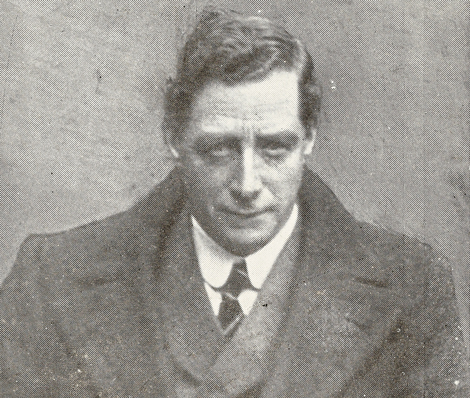Ex-Minister for Defence, Cathal Brugha, killed in Dublin street fighting
Dublin, 10 July 1922 – Cathal Brugha, who was killed in the recent fighting in Dublin, was buried today in Glasnevin Cemetery following a Requiem Mass. He was 45 years old.
Brugha, a TD for the constituency of Waterford-Tipperary, was shot at 10.45am on 6 July when, after refusing to surrender, he rushed from Granville Hotel on O’Connell Street towards a group of Free State troops. Mr Brugha, a fierce opponent of the Anglo-Irish Treaty, was subsequently taken to the Mater Hospital where he underwent an operation. However, his condition deteriorated and he died the following morning.
The jury at an inquest into his death recorded a verdict of death from shock and haemorrhage caused by a bullet fired by some unknown person.
Mr Brugha’s remains were taken from the mortuary chapel in the Mater Hospital to St Joseph’s Church, Berkeley Street in a procession, led by members of Cumann na mBan. The coffin, draped in a tricolour, was surrounded in the hearse by a large number of beautiful wreaths.
Mr Brugha’s death deprives Irish political life of one of its most commanding figures. He was born in Dublin and educated in Belvedere College before becoming a commercial traveller. He was a strong early supporter of both the Gaelic League and the Sinn Féin organisation.
During the rebellion of Easter 1916, Mr Brugha was the commanding officer of the Volunteers in the South Dublin Union where his motto of ‘never surrender’ was pursued to a point where he received no fewer than 14 wounds.

Mimeograph print depicting the body of Cathal Brugha, who fought in O'Connell Street, Dublin, on the Republican side in the Civil War and died on 7 July 1922 in the Mater Hospital from wounds received two days before (Image: National Library of Ireland, 1922)
He ran a successful campaign in the historic 1918 general election and was returned with an overwhelming mandate for the West Waterford constituency. He acted as speaker at the first meeting of Dáil Éireann in January 1919, and the following April he was appointed Minister of Defence, a position he held until the beginning of this year.
Reacting to news of his death, the Irish Times stated: ‘Of all Irelands many extremists, he was the most extreme.’
‘The manner of his death was typical of his life. Cathal Brigha died, as he lived, in the last ditch. No other modern country save Ireland produces such types. They belong in point of time to the Middle Ages, when men would face the stake for an idea, whether it was right or wrong. Of such stuff was Cathal Brugha made. All his life he hated England with an intensity of feeling which is rarely found even in this country of painful memories. Whenever there was talk of rebellion he was at the head of the insurgent movement. Whenever there was talk of a surrender he was found fighting to the last.’
Anti-treaty TDs and representatives of the Citizens’ Army, Fianna Éireann boy scouts, Clan na nGaedheal girl scouts were in attendance at today’s funeral and followed the hearse from the church to the cemetery in Glasnevin, behind the chief mourners. En route, the hearse halted outside the Granville Hotel where he was struck by the fatal shot.
Mr Brugha is survived by his widow and four children, as well as his two sisters and brother.
Pathé newsreel footage of funeral of the late Cathal Bruga 1922
[Editor's note: This is an article from Century Ireland, a fortnightly online newspaper, written from the perspective of a journalist 100 years ago, based on news reports of the time.]





















